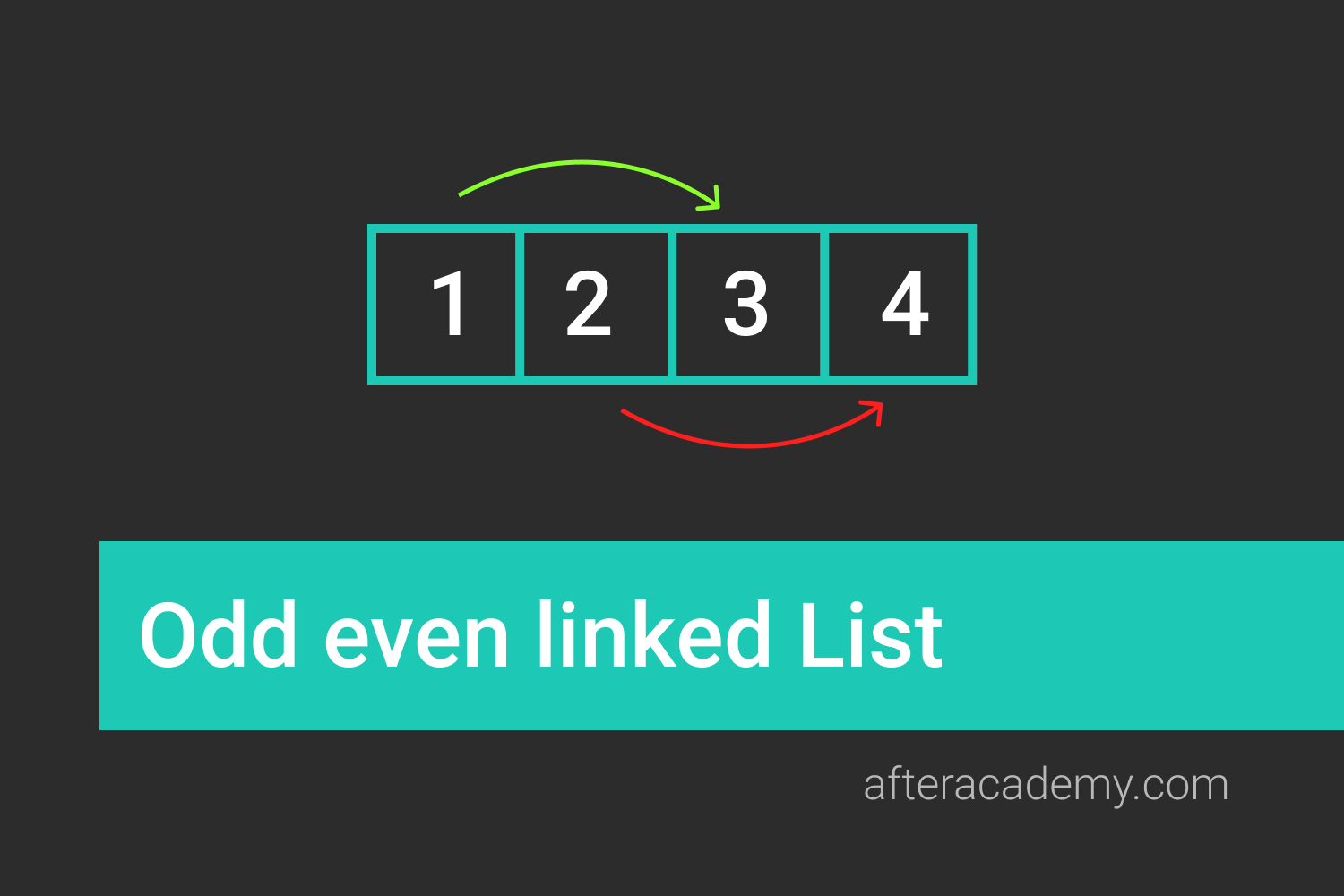Middle of the Linked List

Difficulty: Easy
Understanding the Problem
Problem Description
Given a non-empty, singly linked list with head node
head
, write a program to return a
middle node of the linked list.
If there are even nodes, then there would be two middle nodes, we need to print the second middle element.
Example 1
Input: 11->2->13->44->5
Output: 13
Explanation: The middle element of the linked list is 13.Example 2
Input: 10->2->34->24->15->60
Output: 24
Explanation: As there are even number of nodes, return 24 as it is the second node among two middle elements.Solutions
- Two-Pass: Find the length of the linked list and return the (length/2)th node.
- One-Pass: Use two pointers, the 2nd pointer should traverse twice as fast at the first.
Before moving forward with the question, you must understand the properties of a linked list .
You can try this problem here.
1. Two-Pass
The question demands to find the middle of a singly linked list. We can simply find the total length of the linked list, in this way we can identify which node falls in the middle. To find the middle node, we can traverse again until we reach
(length/2)th
node.
Solution Steps
-
Create a pointer
p, pointing to the head. -
Iterate over the linked list until
preaches to the end of the linked list, thereby find the length of the list. -
Set
pto head again. Now, incrementplength/2times. Now, thepis at the middle of the linked list node. Return the value atp
Pseudo Code
int middleNode(ListNode head) {
int l=0
ListNode p = head
while (p != null) {
p = p.next
l = l + 1
}
p = head
int c = 0
while (c < l/2) {
p = p.next
c = c + 1
}
return p.data
}Complexity Analysis
Time Complexity: O(n)
Space Complexity: O(1)
Critical Ideas To Think
-
Why did we reinitialize
pwith thehead? - Which node will be returned if the length of the linked list is even?
- What if the linked list forms a loop?
2. One-Pass
Another way to solve this problem is to use a little trick. Instead of traversing twice, we can create two-pointers
say slow_ptr
and
fast_ptr.
We can make the
fast_ptr
twice as fast as
slow_ptr
. So, When the
fast_ptr
will reach to the end of the linked list,
slow_ptr
would still be at the middle, thereby pointing to the mid of the linked list.
Solutions Steps
-
Create
slow_ptrandfast_ptrpointing to the head initially. -
Increment
fast_ptrby2and slow_ptr by1positions untilfast_ptrandfast_ptr.nextis notNULL -
Return the value at
slow_ptr.
Pseudo Code
int middleNode(ListNode head) {
ListNode slow = head
ListNode fast = head
while (fast != null and fast.next != null) {
slow = slow.next
fast = fast.next.next
}
return slow.data
}Complexity Analysis
Time Complexity: O(n)
Space Complexity: O(1)
Critical Ideas To Think
- Why did we use two pointers?
-
Why did we iterate until
fast != nullandfast.next != null? - Do both the discussed approaches affect the running time?
Comparison Of Different Approaches

Suggested Problems To Solve
- Remove Duplicates from Sorted List
- Merge Sort on Linked List
- Check if a singly linked list is a palindrome
- Detect and Remove Loop in a Linked List
- Sort a linked list using insertion sort
- Remove Nth Node from List End
Happy coding!
Enjoy Algorithms.





